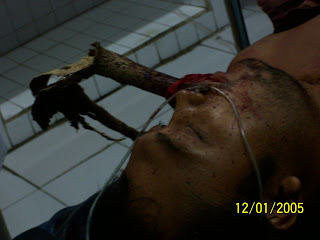Maxillofacial Injuries
Facial injuries have the potential to cause disfigurement and loss of function; for example, blindness or difficulty moving the jaw can result. Although it is seldom life-threatening, facial trauma can also be deadly, because it can cause severe bleeding or interference with the airway; thus a primary concern in treatment is ensuring that the airway is open and not threatened so that the patient can breathe. Depending on the type of facial injury, treatment may include bandaging and suturing of open wounds, administration of ice, antibiotics and pain killers, moving bones back into place, and surgery. When fractures are suspected, radiography is used for diagnosis. Treatment may also be necessary for other injuries such as traumatic brain injury, which commonly accompany facial trauma.
 In developed countries, the leading cause of facial trauma used to be motor vehicle accidents, but this mechanism has been replaced by interpersonal violence; however auto accidents still predominate as the cause in developing countries and are still a major cause elsewhere. Thus prevention efforts include awareness campaigns to educate the public about safety measures such as seat belts and motorcycle helmets, and laws to prevent drunk and unsafe driving. Other causes of facial trauma include falls, industrial accidents, and sports injuries.
In developed countries, the leading cause of facial trauma used to be motor vehicle accidents, but this mechanism has been replaced by interpersonal violence; however auto accidents still predominate as the cause in developing countries and are still a major cause elsewhere. Thus prevention efforts include awareness campaigns to educate the public about safety measures such as seat belts and motorcycle helmets, and laws to prevent drunk and unsafe driving. Other causes of facial trauma include falls, industrial accidents, and sports injuries.




0 comments:
Post a Comment